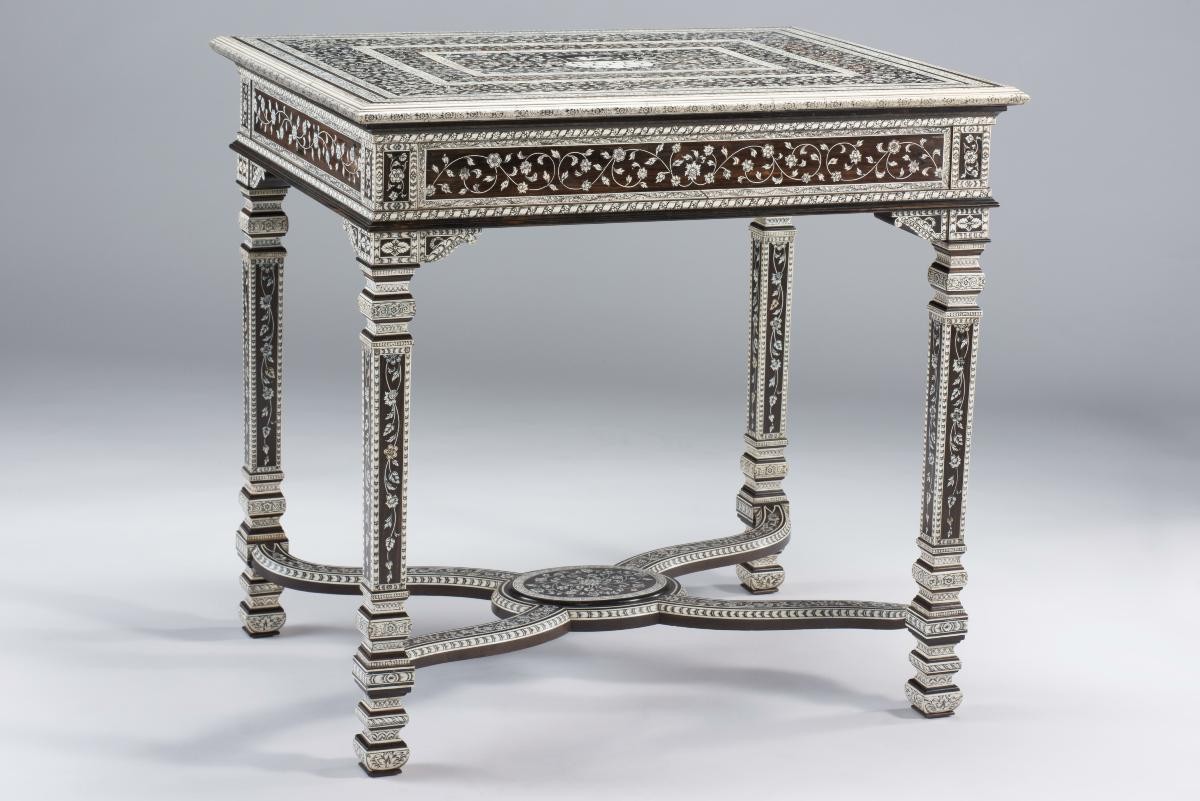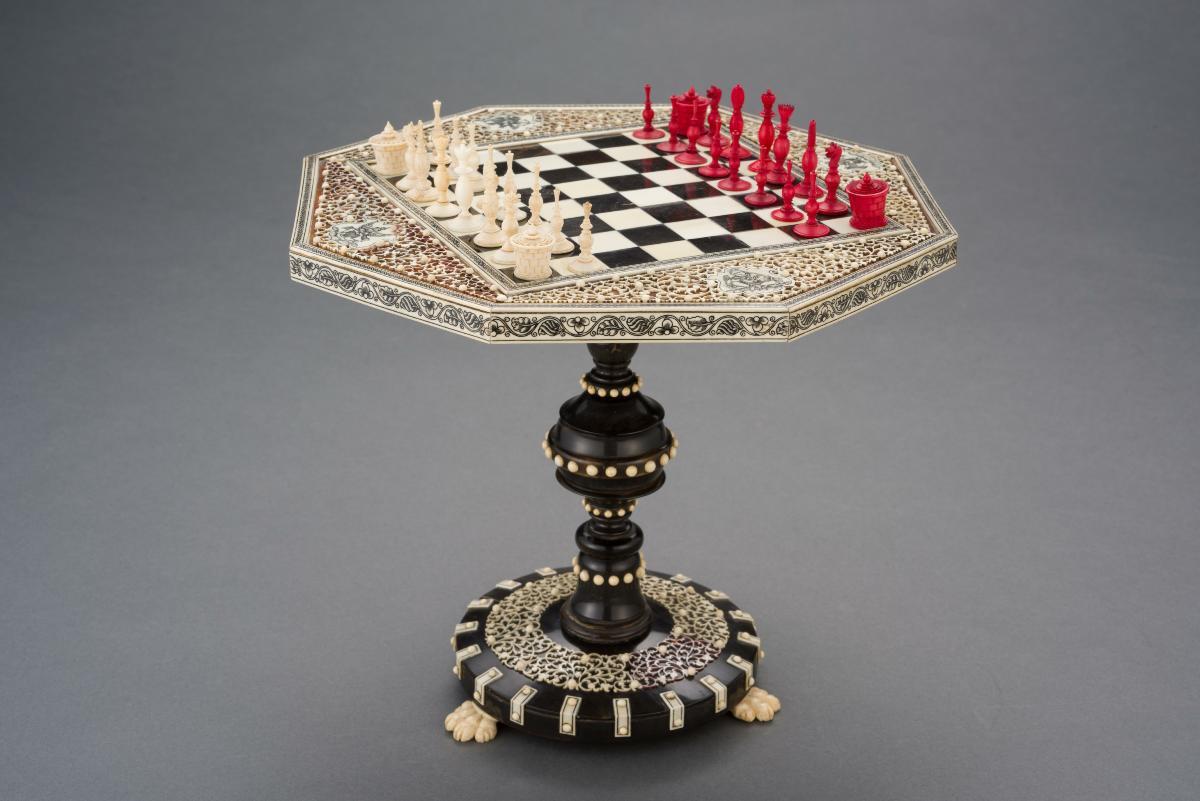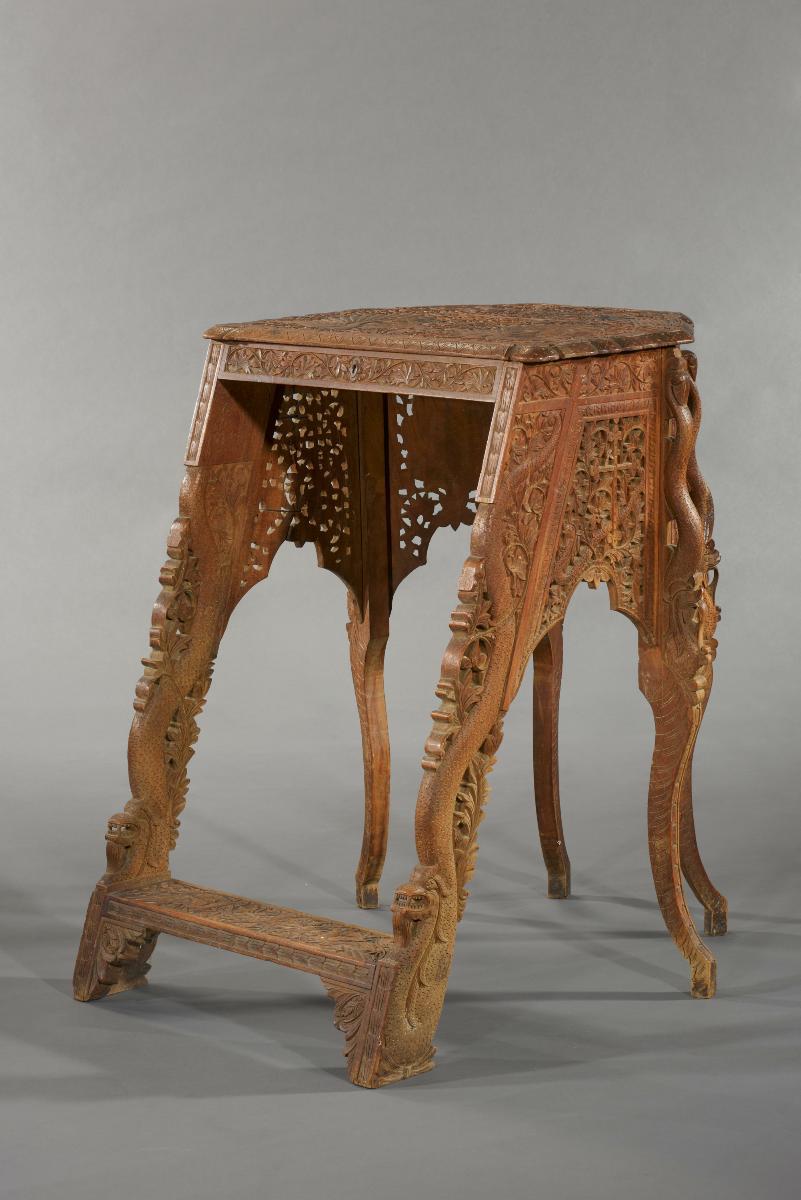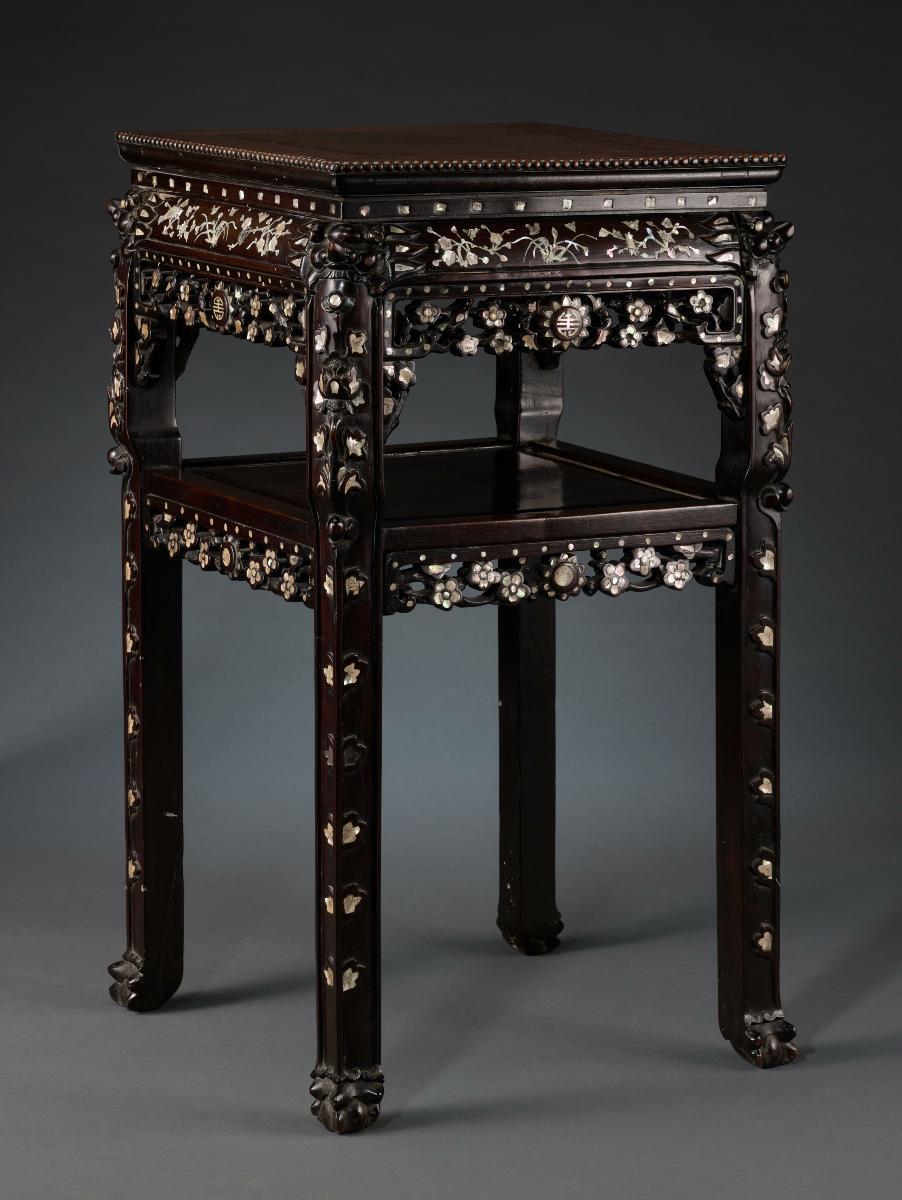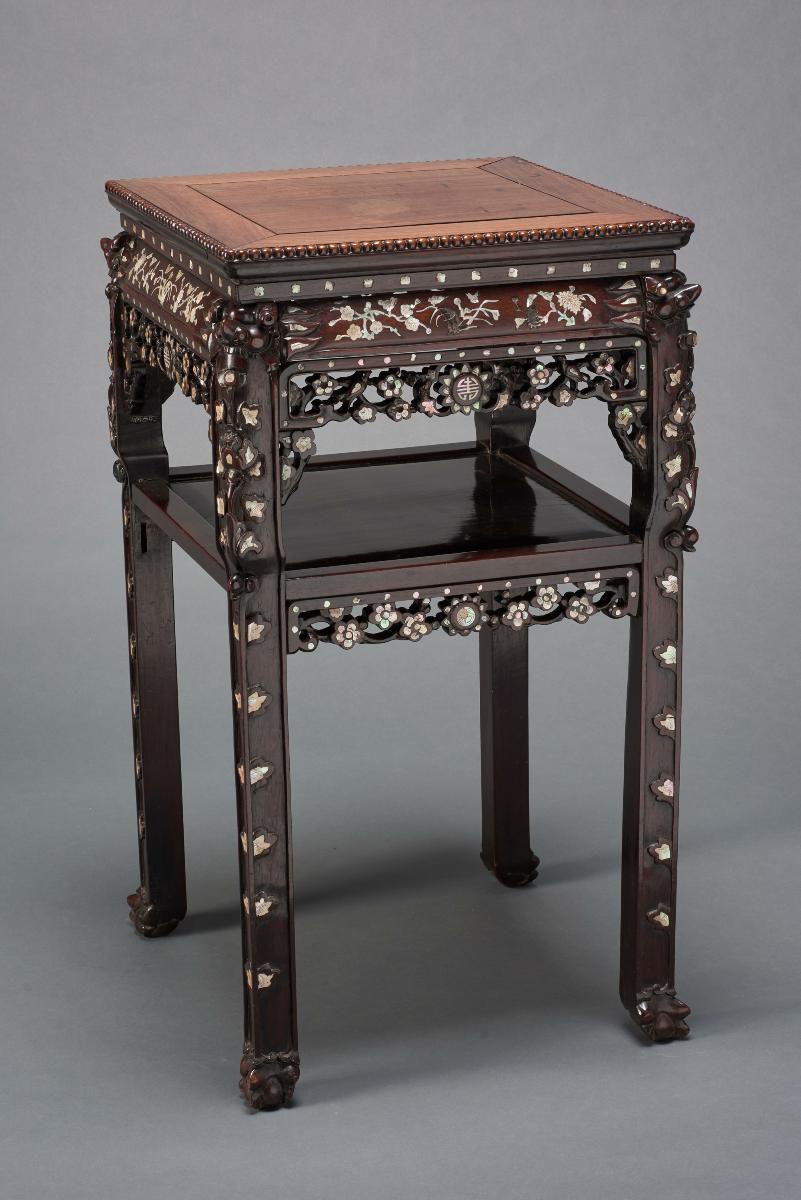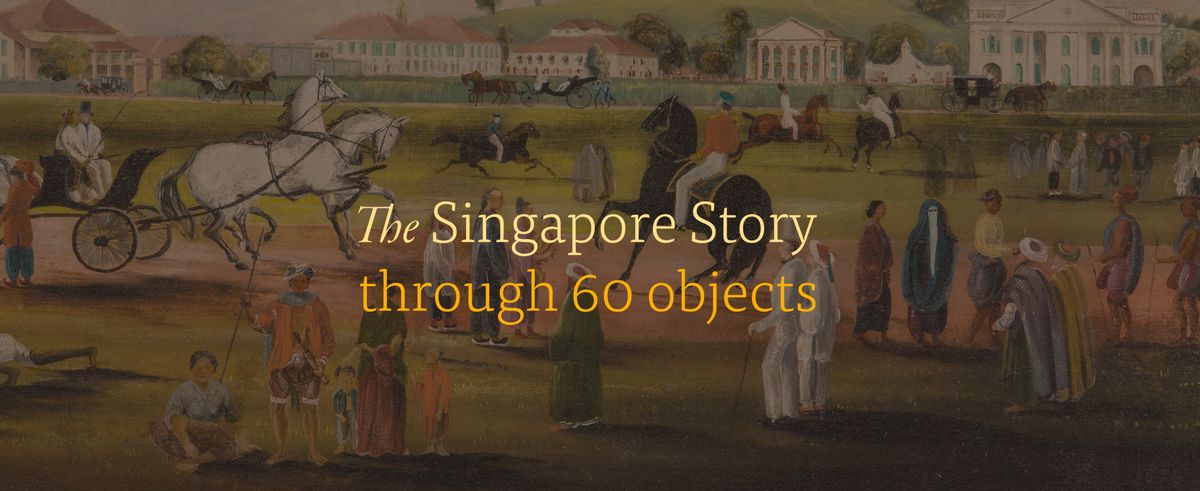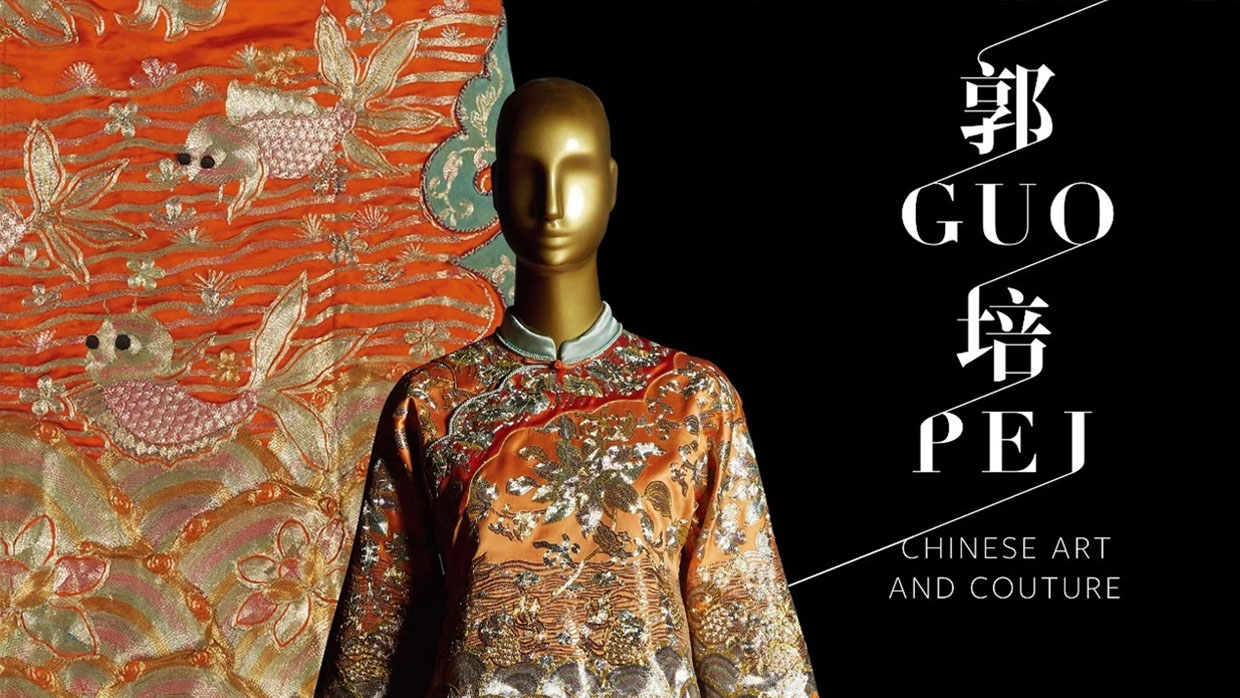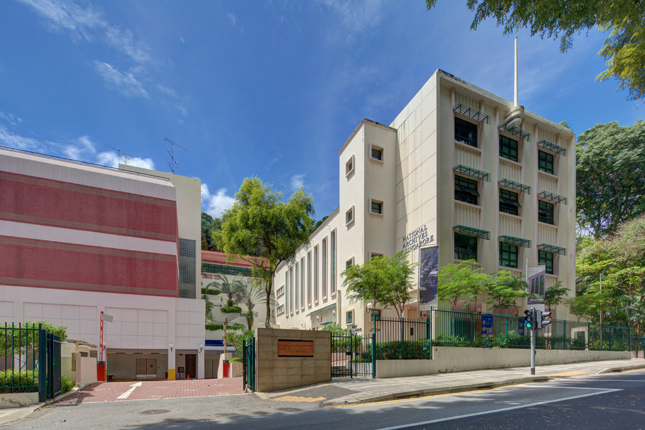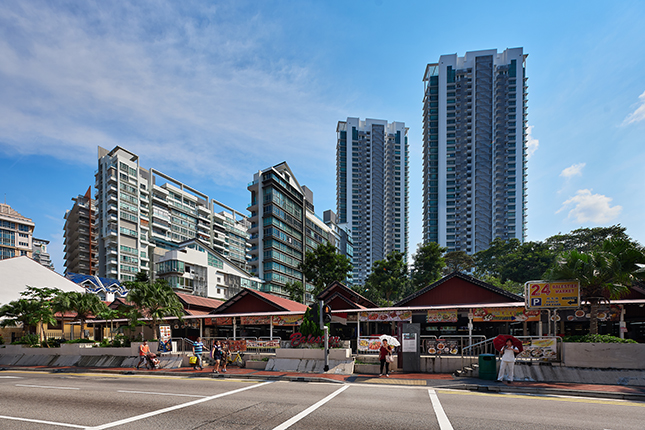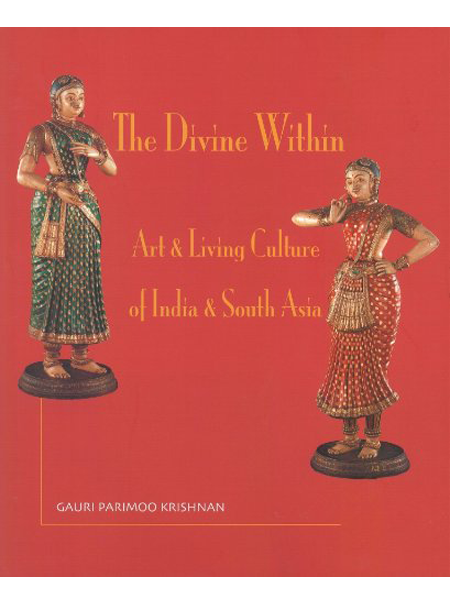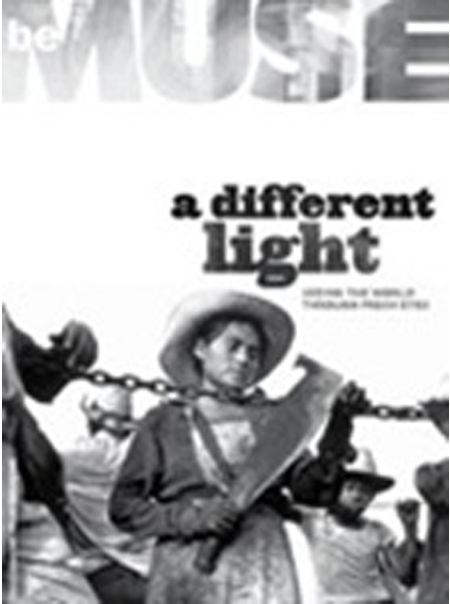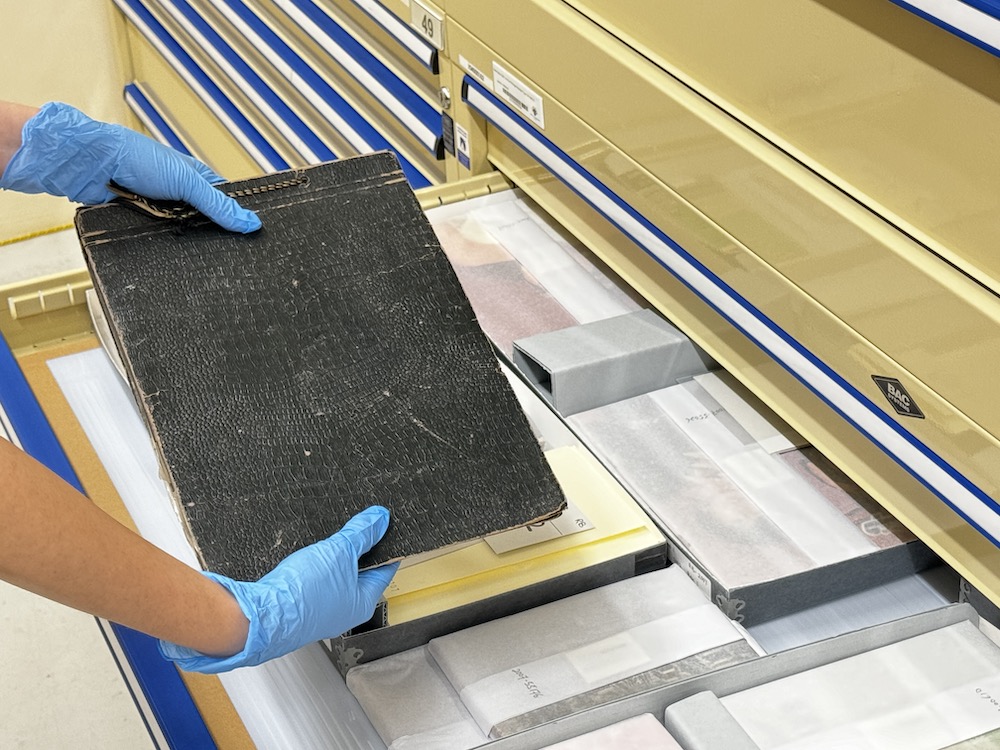This table is intricately inlaid on every surface with ivory scrolling vines and flowers. It was made in Vizagapatam, a port on the Coromandel Coast which was known for producing fine examples of inlaid bureau-bookcases, toilet mirrors, chairs and various types of boxes. The shape and size suggest that it may have been designed as a communion table. Every edge is trimmed in ivory. The legs are connected by an x-shaped stretcher with a circular shelf, inlaid with a large floral spray. The top of the table features a large western-style coat of arms, possibly those of Grieben of Erfurt. The coat of arms is framed by two rectangular borders of ivory, engraved with smaller flowering plant designs. The decoration is very similar to the floral patterns found on other furniture made in Vizagaptam from the early and mid 18th century and exported to England. Similar designs can be seen on a daybed and set of three chairs produced between 1700 and 1720 (now in the collection of the V&A), and on a chair presented to Lady Harland in the year 1772 from the Nawab of Arcot. Two other similar examples of chairs and daybeds are on display in Charlecote Park House, Warwickshire, and Raynham Hall, Norfolk. Tables made in Vizagapatam are relatively rare, compared with other furniture produced in the area. Vizagapatam artisans are known for the skill with which they applied Indian ivory working techniques and decorative forms to western furniture. Major John Corneille, in the first known written reference to the Vizagapatam furniture industry, stated in 1756 that Vizagapatam was ‘remarkable for its inlay work’, which was made with ‘the greatest perfection’. How they developed their skills is not clear, but artisans in Orissa (just to the north) are known to have produced ivory inlay furniture for royal patrons. It is likely that the Vizagapatam furniture-makers were inspired by European examples of inlay and veneer work found on rifles, boxes, and writing slopes used by Europeans in India in the 18th century, and by the local textile industry, which produced textiles with floral designs for the European market. Several settlements along the Coromandel Coast were important centers of shipbuilding, and it is also possible that European carpenters based in these settlements may have given Indian carpenters an insight into western cabinet-making techniques. Objects in this style were once thought to be Indo-Portuguese, but are now thought to be the earliest surviving works in India in the English style.




